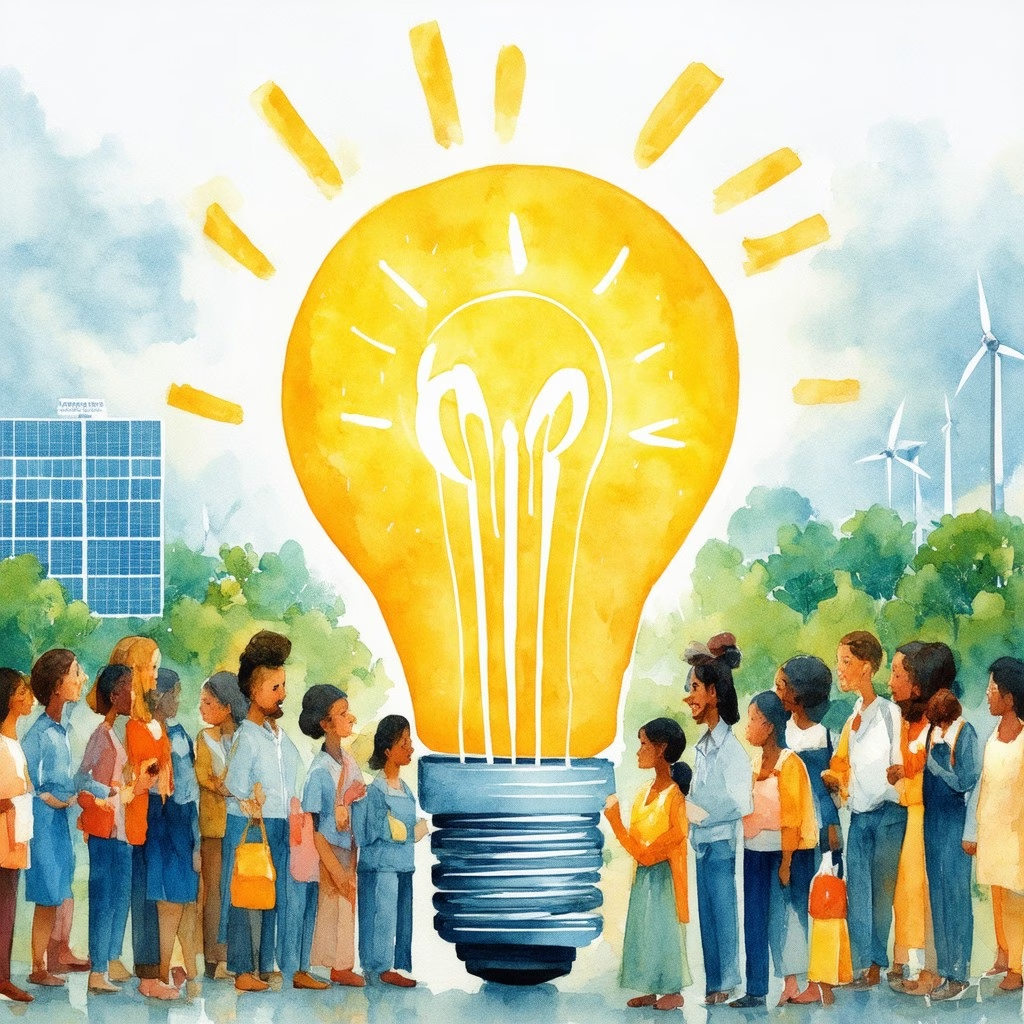Key Takeaways
- Understand the critical role of government energy assistance programs, including LIHEAP and state-specific options, in alleviating rising energy costs for low-income households.
- Explore the Washington State Energy Assistance Program (WSEAP) and its benefits, such as financial aid for utility bills and energy efficiency initiatives.
- Learn how to access LIHEAP assistance, which provides essential support for heating and cooling costs, especially during extreme weather conditions.
- Discover California’s Energy Savings Assistance Program, offering income-qualified residents free energy-saving home improvements and financial support.
- Follow a step-by-step guide to apply for energy assistance online, ensuring you gather necessary documentation and understand eligibility criteria.
- Utilize additional resources and local agencies for emergency electric assistance, which can provide immediate support during financial crises.
In today’s challenging economic landscape, understanding government energy assistance programs is crucial for households seeking relief from rising energy costs. This comprehensive guide will delve into the various options available, including the Low-Income Home Energy Assistance Program (LIHEAP) and state-specific energy support initiatives. We will explore essential topics such as the Washington State Energy Assistance Program, the benefits of LIHEAP assistance, and how to apply for energy assistance online. Additionally, we will cover eligibility criteria, financial support for energy bills, and emergency electric assistance options. By the end of this article, you will have a clear understanding of how to navigate these vital energy assistance programs and access the support you need to manage your energy expenses effectively.
Understanding Government Energy Assistance Programs
What is the Washington State Energy Assistance Program?
The Washington State Energy Assistance Program (WSEAP) is designed to support residents in managing their energy costs and transitioning to more sustainable energy solutions. This program is particularly beneficial for low-income households, providing financial assistance for utility bills and promoting the adoption of low-to-no carbon heating and cooling systems.
Key features of the Washington State Energy Assistance Program include:
- Eligibility Criteria: WSEAP is available to individuals and families whose income does not exceed 80% of the Area Median Income (AMI). This ensures that the most vulnerable populations receive the necessary support.
- Financial Assistance: The program offers direct financial aid to help cover heating and cooling costs, which can be critical during extreme weather conditions. This assistance can be applied to various utility bills, including electricity, gas, and other heating sources.
- Energy Efficiency Initiatives: In addition to financial support, WSEAP encourages participants to adopt energy-efficient practices and technologies. This includes access to resources and information on low-carbon heating options, which can lead to long-term savings and environmental benefits.
- Application Process: Residents can apply for assistance through local community action agencies or online platforms. It is advisable to gather necessary documentation, such as proof of income and utility bills, to streamline the application process.
- Additional Resources: The program may also connect participants with other energy-related services, such as weatherization assistance and energy audits, which can further enhance energy efficiency in homes.
For more information about the Washington State Energy Assistance Program, residents can visit the Washington State Department of Commerce website or contact local community action agencies. These resources provide comprehensive guidance on eligibility, application procedures, and additional support services available to residents.
By participating in WSEAP, Washington residents can not only alleviate immediate financial burdens but also contribute to a more sustainable energy future.
Overview of LIHEAP and its Importance in Energy Assistance
The Low Income Home Energy Assistance Program (LIHEAP) is a crucial federal initiative aimed at assisting low-income households in managing their energy bills. This program plays a significant role in ensuring that vulnerable populations have access to essential energy services, especially during extreme weather conditions.
LIHEAP provides various forms of assistance, including:
- Direct Financial Aid: Households can receive funds to help pay for heating and cooling costs, which is vital for maintaining a safe and comfortable living environment.
- Energy Crisis Intervention: In cases of emergency, such as a utility shut-off, LIHEAP can provide immediate assistance to prevent loss of service.
- Weatherization Services: The program also offers resources for energy efficiency improvements, helping families reduce their energy consumption and costs over time.
To apply for LIHEAP assistance, eligible households must complete an energy assistance application through their state’s LIHEAP office. This process typically requires documentation of income and energy costs, ensuring that aid is directed to those in greatest need.
Overall, LIHEAP is an essential component of the broader landscape of government energy assistance programs, providing critical support to low-income families and helping them manage their energy bills effectively.

State-Specific Energy Assistance Options
What is the California Free Energy Program?
The California Free Energy Program, primarily represented by the Energy Savings Assistance (ESA) Program, is designed to assist income-qualified homeowners and renters in reducing their energy costs through various energy-efficient home improvements. This program, administered by utility companies such as Southern California Edison, provides a range of services aimed at enhancing energy efficiency and comfort in homes.
Key features of the Energy Savings Assistance Program include:
- Home Improvements: Eligible participants can receive free or low-cost energy-saving upgrades, including:
- Heat pump water heater replacements
- Installation of energy-efficient appliances, such as refrigerators, clothes washers, and dishwashers
- Weatherization services, including insulation and air sealing to improve home energy efficiency
- Eligibility Criteria: To qualify for the ESA program, applicants must meet specific income guidelines, which are typically set at or below 200% of the federal poverty level. This ensures that assistance is directed towards those who need it most.
- Application Process: Interested individuals can apply for the program through their local utility provider. The application process is straightforward, often requiring proof of income and residency.
- Additional Benefits: Beyond energy savings, participants may also experience improved home comfort and reduced utility bills, contributing to overall financial relief.
- Resources and Support: For more information, residents can visit the California Public Utilities Commission website or contact their utility provider directly. The Gov Guider platform may also provide additional resources and guidance on accessing energy assistance programs.
Government Energy Assistance California: Key Features and Benefits
California’s government energy assistance programs are designed to provide vital support to low-income households struggling with energy bills. These programs not only help with immediate financial relief but also promote long-term energy efficiency.
Some key features and benefits of government energy assistance in California include:
- Financial Aid for Energy Bills: Programs like LIHEAP offer crucial financial support for energy bills, ensuring that families can maintain essential services.
- Energy Efficiency Programs: Government energy programs focus on improving energy efficiency in homes, which can lead to lower utility costs over time.
- Access to Resources: Residents can find comprehensive information on available programs through platforms like Gov Guider, which helps navigate the complexities of energy assistance.
- Emergency Electric Assistance: In times of crisis, programs are available to provide immediate support for electricity needs, ensuring families are not left in the dark.
By leveraging these government energy assistance programs, Californians can significantly reduce their energy burden and improve their overall quality of life.
Eligibility and Application Process
Understanding the eligibility criteria and application process for government energy assistance is crucial for those seeking help with their energy bills. This section will clarify the maximum income limits for energy assistance and provide a step-by-step guide on how to apply for energy assistance online.
What is the maximum income for energy assistance?
The maximum income for energy assistance under the Low Income Home Energy Assistance Program (LIHEAP) varies by state and household size. For the fiscal year 2025, the general income eligibility guidelines are as follows:
- Income Limits: Typically, households must have an income at or below 150% of the federal poverty level. For example, in 2025, the federal poverty level for a family of four is approximately $36,570, making the income limit for LIHEAP around $54,855.
- State Variations: Each state may have its own specific income thresholds and additional criteria. It’s essential to check with your local LIHEAP office or the state’s energy assistance program for precise figures.
- Additional Factors: Eligibility may also depend on factors such as household size, age of household members, and whether any members receive certain types of assistance (e.g., TANF, SNAP).
For the most accurate and up-to-date information, visit the official LIHEAP website or your local utility provider’s energy assistance page. You can also refer to the U.S. Department of Energy for comprehensive guidelines on LIHEAP eligibility and benefits.
How to apply for energy assistance online: A Step-by-Step Guide
Applying for energy assistance online can streamline the process and provide quicker access to necessary funds. Here’s a step-by-step guide to help you navigate the application process:
- Gather Required Documents: Before starting your application, collect necessary documents such as proof of income, identification, and utility bills.
- Visit Your State’s Energy Assistance Website: Go to your state’s energy assistance program website. You can find links to state-specific programs through the National Energy Assistance Coalition.
- Complete the Online Application: Fill out the online application form with accurate information. Ensure you provide all required details to avoid delays.
- Submit Your Application: After reviewing your application for accuracy, submit it online. Keep a copy of your submission for your records.
- Follow Up: After submission, follow up with your local energy assistance office to confirm receipt and inquire about the status of your application.
By following these steps, you can efficiently apply for energy assistance online and access the support you need to manage your energy bills. For more information on energy assistance programs, visit this resource.
Exploring LIHEAP and Its Benefits
What is the NY Energy Assistance Program?
The New York Energy Assistance Program (NY EAP) is a vital component of the Low Income Home Energy Assistance Program (LIHEAP), designed to provide financial assistance to eligible households to help manage their energy costs. The program encompasses several key benefits:
- Regular HEAP Benefit: This benefit assists with heating costs during the heating season, which typically runs from mid-November to mid-March. Households can receive a one-time payment to help cover heating expenses.
- Emergency HEAP Benefit: Available for households facing a utility shut-off notice or fuel shortage, this benefit provides immediate assistance to ensure that families do not experience a loss of heating during critical times.
- Cooling Assistance Benefit: Eligible households can receive help in purchasing and installing air conditioners or fans to combat extreme heat, particularly during the summer months.
- Clean and Tune Benefit: This benefit assists with the cleaning and tuning of home heating equipment, ensuring that systems operate efficiently and safely.
- Heating Equipment Repair or Replacement (HERR) Benefit: This program helps cover the costs associated with repairing or replacing malfunctioning or outdated heating equipment.
- Eligibility Criteria: Eligibility for the NY EAP is primarily based on household size and income, with specific guidelines established for the Regular HEAP Benefit. Additional factors such as participation in SNAP, Temporary Assistance, or Supplemental Security Income can also qualify households for assistance.
- Application Process: Households can apply for assistance through various methods:
- Online: Information about local contacts and application procedures can be found on the New York State Department of Social Services website.
- By Phone: Households can contact their HEAP Local District Contact for assistance.
- In Person: Applications can be submitted in person at local district offices.
- Online Application: The MyBenefits.NY.gov portal offers a fast, easy, and confidential way to apply for HEAP and other benefits.
- Energy Assistance Program (EAP): This program provides monthly bill credits and arrears forgiveness to eligible customers who receive a HEAP grant, further alleviating financial burdens.
- EnergyShare Program: This initiative may offer up to $300 annually toward a utility bill for eligible customers who have made good-faith payments, helping to maintain energy access.
For more detailed information, including specific eligibility guidelines and application deadlines, visit the New York State Department of Social Services website or contact your local HEAP office.
LIHEAP Application: How to Access LIHEAP Assistance
Accessing LIHEAP assistance is a straightforward process designed to help those in need. Here’s how you can apply for energy assistance online:
- Determine Eligibility: Check if you meet the eligibility criteria based on your household size and income. The National Energy Assistance Coalition provides resources to help you understand these requirements.
- Gather Required Documents: Prepare necessary documentation, including proof of income, identification, and any previous energy bills.
- Complete the Application: You can apply through your state’s LIHEAP application portal. Many states offer online applications, making it easier to submit your information securely.
- Follow Up: After submitting your application, follow up with your local LIHEAP office to ensure your application is processed and to inquire about any additional steps.
For further assistance, consider reaching out to the U.S. Department of Energy for guidance on energy programs and resources available in your area.

Financial Support for Energy Bills
Understanding the various forms of government energy assistance is crucial for individuals facing challenges in managing their energy costs. One significant initiative is the Washington State Government Energy Assistance Payment (EAP), which provides essential financial support to eligible residents.
What is the WA Government Energy Assistance Payment?
The WA Government Energy Assistance Payment (EAP) is a financial support initiative designed to assist eligible concession card holders in managing their energy costs. This payment, which has replaced the previous Cost of Living Allowance (CoLA), provides a yearly rebate of $334.49 directly applied to energy bills. Eligibility for the EAP typically includes holders of specific concession cards such as the Pensioner Concession Card, the Health Care Card, and the Department of Veterans’ Affairs Gold Card. To apply for this payment, individuals must ensure they meet the eligibility criteria and submit their application through the appropriate channels, which can often be facilitated via the Western Australia Government’s official website or through utility providers like Synergy.
For more detailed information about the application process and eligibility requirements, individuals can refer to the Government of Western Australia’s resources or consult Gov Guider, which offers guidance on various government assistance programs. This ensures that eligible residents can effectively access the financial support available to them.
Utility Bill Forgiveness Programs: How They Work
Utility bill forgiveness programs are designed to provide relief to individuals struggling to pay their energy bills. These programs often allow for the reduction or elimination of outstanding balances, helping families avoid disconnection of services. Many states offer such programs as part of their energy assistance programs, which may include grants or subsidies to cover overdue payments.
To benefit from these programs, individuals typically need to demonstrate financial hardship and may be required to provide documentation of their income and expenses. It’s essential to check with local utility providers or state energy offices to understand the specific eligibility criteria and application processes. For those looking for immediate support, resources like the National Energy Assistance Coalition can provide valuable information on available programs and how to apply for energy assistance online.
Additional Resources for Energy Assistance
What is the WA Cares program?
The WA Cares Fund is a state-sponsored long-term care insurance program designed to provide financial support for Washington residents who require long-term care services. Here’s how the program operates:
- Funding Structure: All working Washingtonians contribute a small percentage of their income—specifically, 0.58%—to the WA Cares Fund. This contribution is deducted from employees’ paychecks and is intended to create a sustainable funding source for long-term care.
- Benefit Access: Once eligible individuals need long-term care services, they can access a benefit of up to $36,500, which is subject to annual inflation adjustments. This benefit can be used for various services, including in-home care, assisted living, and nursing home care.
- Eligibility Requirements: To qualify for benefits, individuals must have contributed to the fund for a minimum of 10 years, or 3 of the last 6 years, and must be at least 18 years old. Additionally, individuals must be residents of Washington State when they apply for benefits.
- Impact on Care Accessibility: The WA Cares Fund aims to alleviate the financial burden of long-term care, making it more accessible for residents. This initiative is crucial as it addresses the growing need for long-term care services in an aging population.
- Additional Resources: For more detailed information, residents can visit the official WA Cares Fund website or consult resources from the Washington State Department of Social and Health Services (DSHS), which oversees the program.
Emergency electric assistance: Finding Immediate Support
Emergency electric assistance programs are vital for individuals facing immediate financial crises that threaten their ability to pay energy bills. These programs are designed to provide quick relief to those in need. Here are key features of emergency electric assistance:
- Eligibility Criteria: Most programs require applicants to demonstrate financial hardship, often defined by income limits or unexpected expenses that impact their ability to pay energy bills.
- Application Process: Individuals can typically apply for emergency electric assistance online or through local community organizations. It’s essential to have documentation ready, such as proof of income and a recent utility bill.
- Types of Assistance: Assistance may include one-time payments to cover overdue bills, direct payments to utility companies, or vouchers for energy services.
- Local Resources: Many states have local agencies that administer these programs. For example, the National Energy Assistance Coalition provides resources and information on available programs across the U.S.
Conclusion: Navigating Government Energy Programs
Understanding the Low-Income Home Energy Assistance Program
The Low-Income Home Energy Assistance Program (LIHEAP) is a vital resource for families struggling to pay their energy bills. This government energy assistance program provides financial aid to eligible households, ensuring they can maintain essential heating and cooling services. LIHEAP assistance can cover a portion of energy costs, helping families avoid disconnection during extreme weather conditions. To qualify, applicants must meet specific income guidelines, which vary by state. For more detailed information on eligibility and benefits, you can visit the [Low Income Home Energy Assistance Program (LIHEAP)](https://www.acf.hhs.gov/ocs/programs/liheap).
Exploring Government Energy Efficiency Programs for Long-Term Savings
Government energy efficiency programs are designed to help households reduce their energy consumption and costs over time. These programs often provide resources such as energy audits, rebates for energy-efficient appliances, and funding for home weatherization improvements. By participating in these initiatives, families can not only save money on their energy bills but also contribute to environmental sustainability. Many states offer specific programs tailored to local needs, making it essential to explore options available in your area. For comprehensive guidance on accessing these resources, check out our article on [navigating government energy assistance programs](https://govguider.com/navigating-government-energy-assistance-programs-maximize-your-benefits-for-energy-bills-and-efficient-weatherization-solutions/).




